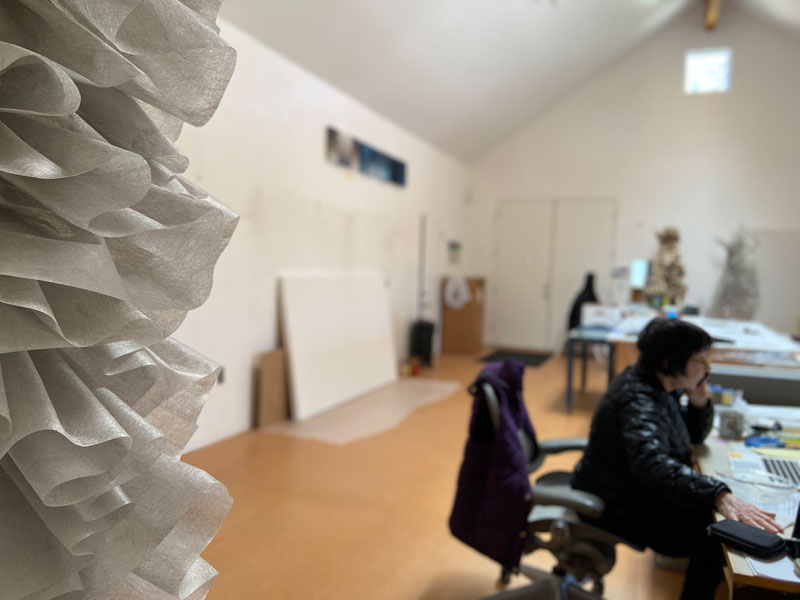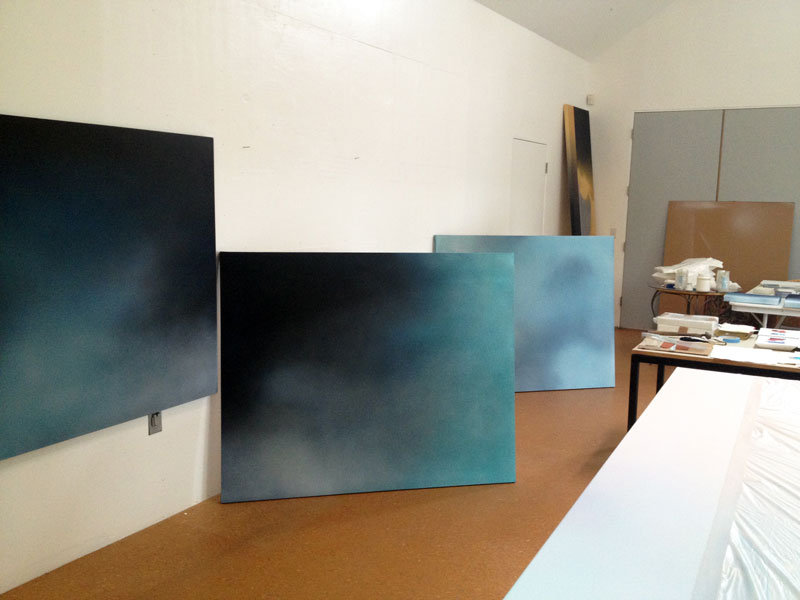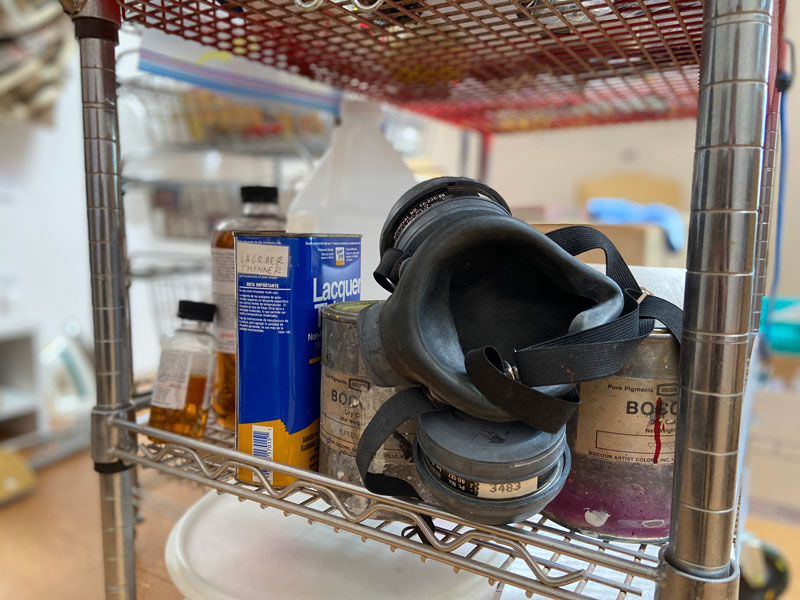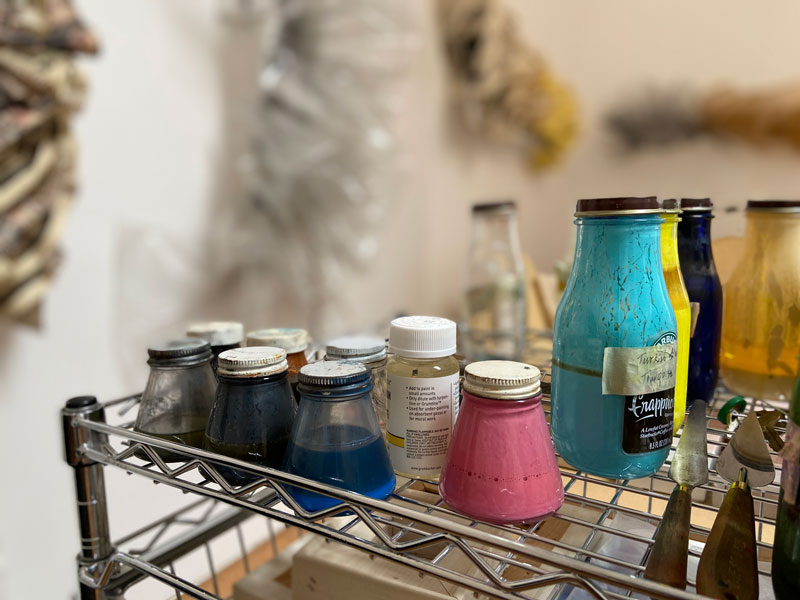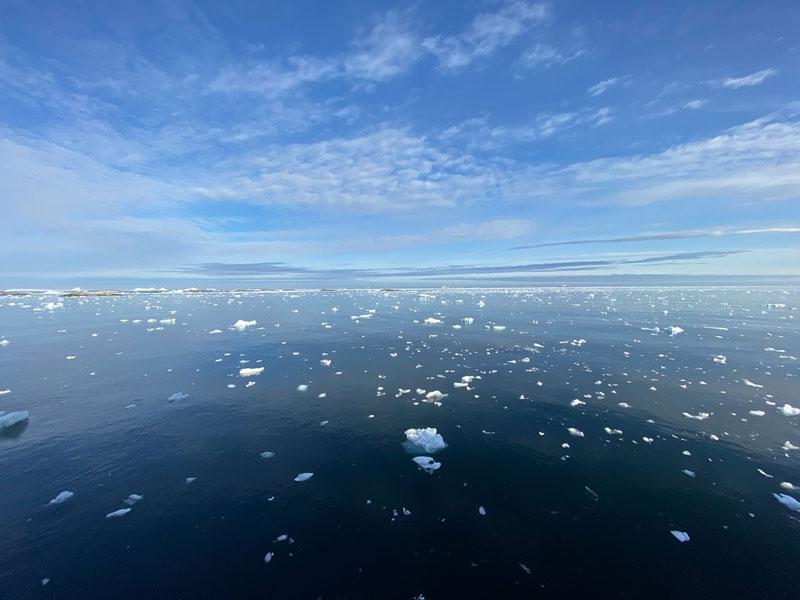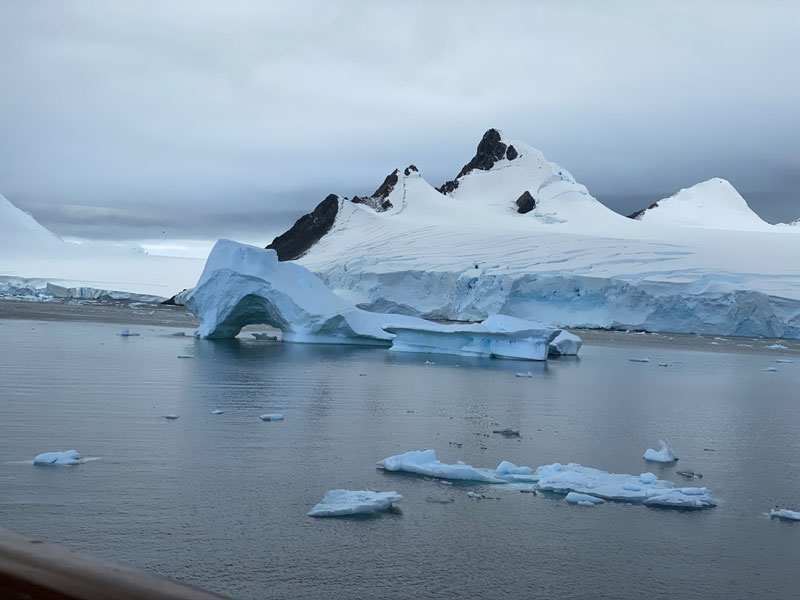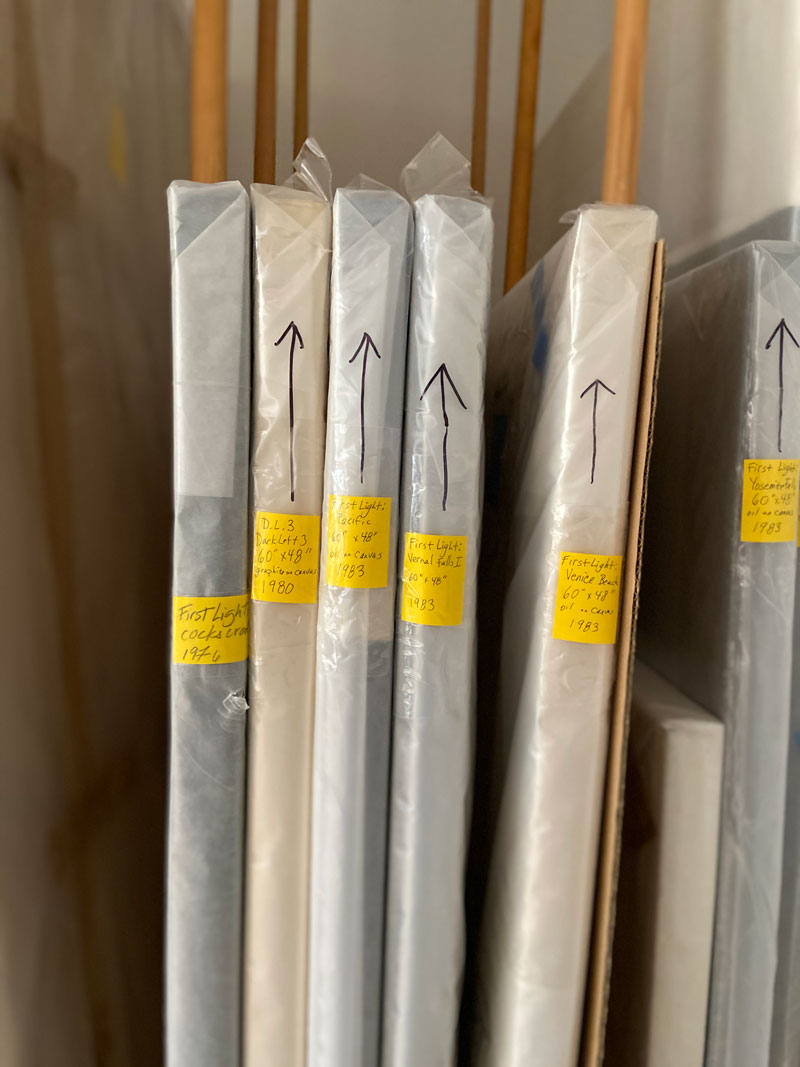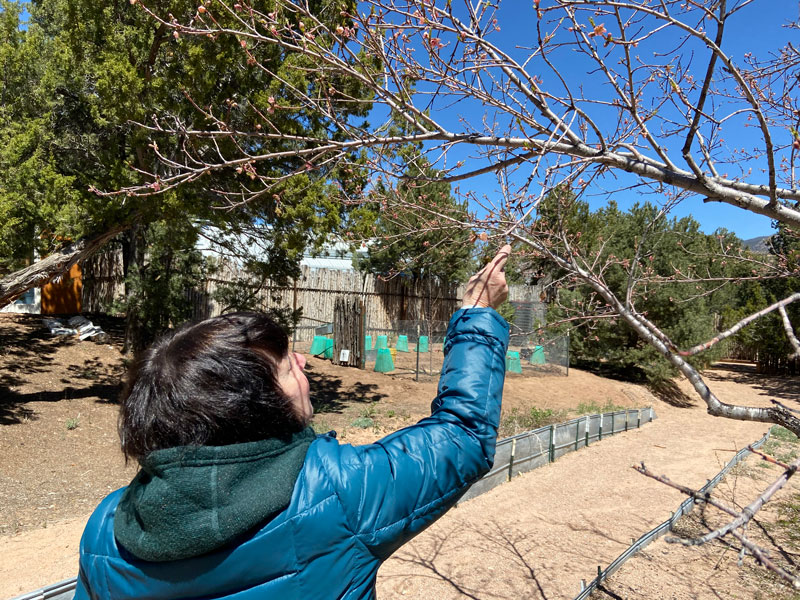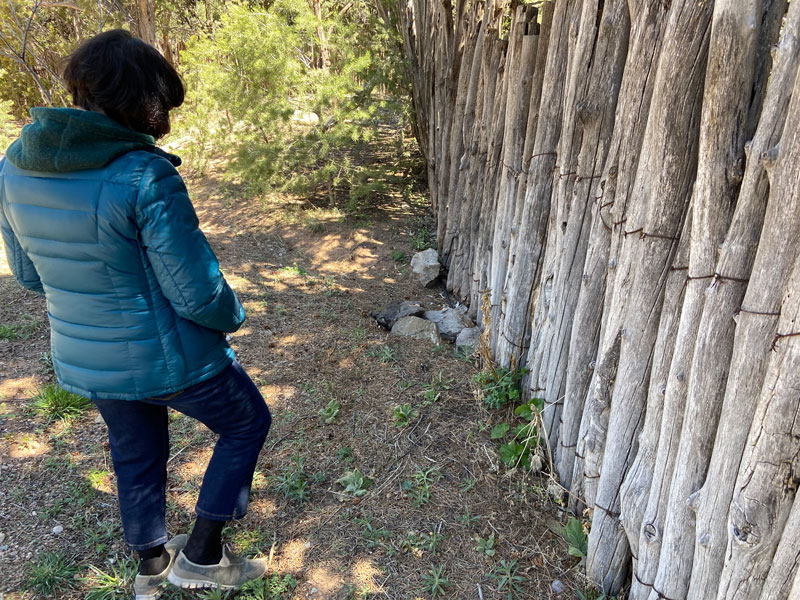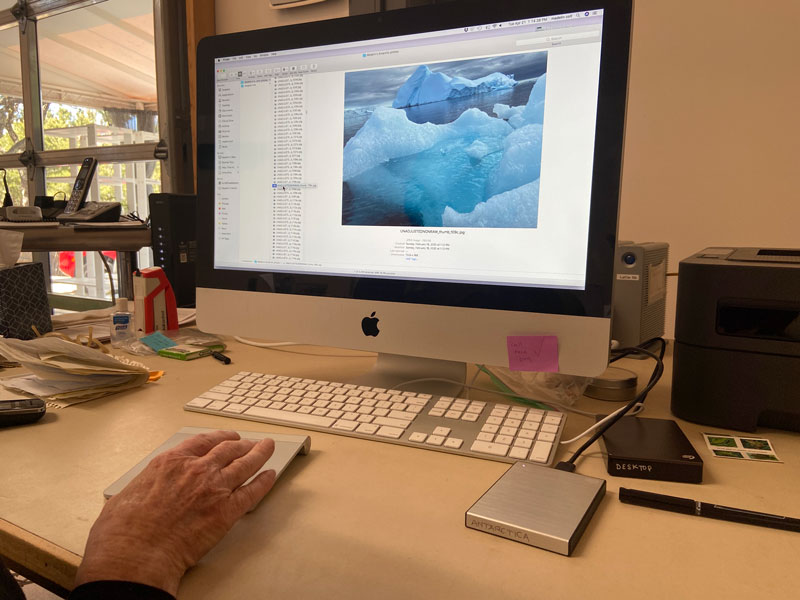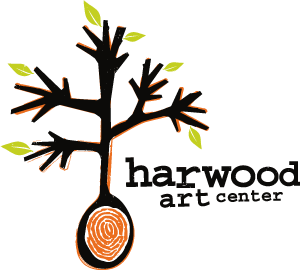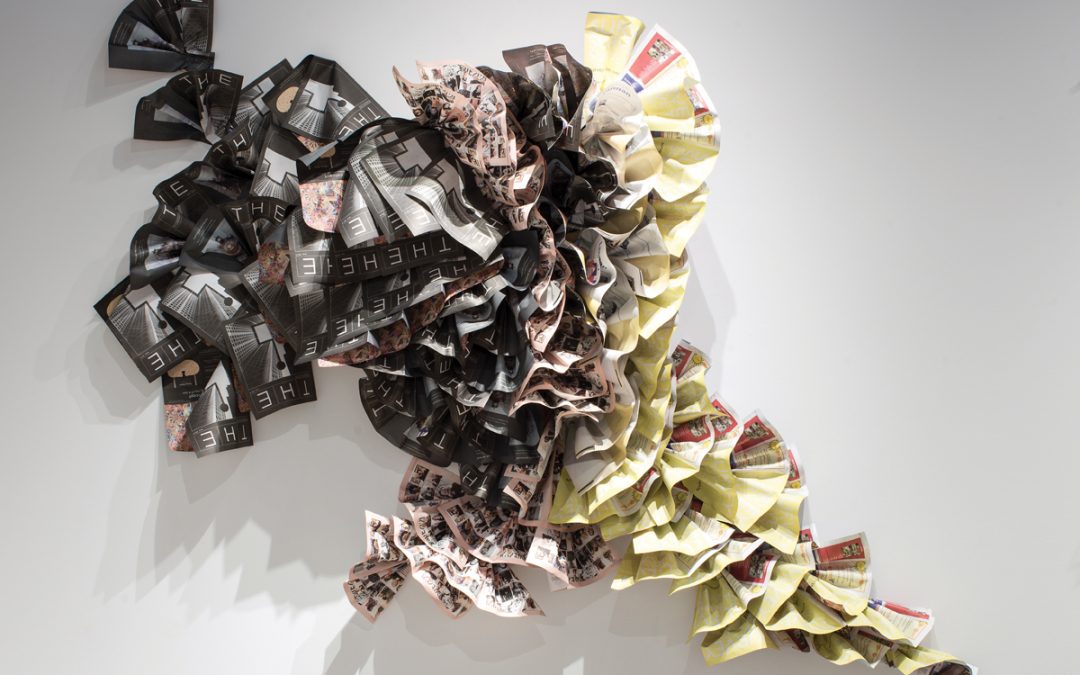Our May exhibitions have been postponed until 2021, but that won’t stop us from connecting with our artists and sharing their work with the community. We reached out to Madelin at her studio in Northern New Mexico to see what she has been working on. We hope you enjoy this special peek into her studio practice as a preview of what’s to come in 2021. We can’t wait to show Madelin’s work in 2021!
Where is your studio? Why did you choose that location?
My studio is in Tesuque, NM. I moved here from Venice, California. There is a comfortable sense to the land. Often that is the reason I do or choose something.
How is your life, your practice, your art, the same or different now than it was at the beginning of the year?
Two things happened since the beginning of the year that have been momentous. I spent January and February in Patagonia and the Antarctic. Then we started the Coronavirus pandemic quarantine. I have a tendency to be an isolator in order to get my work done. The primary difference is that this solitude is enforced. And…I don’t have to take off my mask and gloves when I leave the studio!
I’m not as relaxed when I go out. I detour if someone doesn’t have a mask on. Since it is my little short life, I want it to be as long and good and healthy as possible. There are some things I cannot see that might bite me.
What does (or did) a typical day in the studio look like for you?
I get to the studio as early as I can. I walk around the property, check fences….they sometimes fall down! Bears help. I check the garden. I look around, I listen. I try to be quiet, because now and then there’s company. I like that. A coyote, a bobcat—the skunks are pretty obvious! I go to work. If I don’t go to work I won’t have the skills to capture an idea.
Once in the studio, I check the work I did the day before, to see where it is, whether it’s dry, how far I got, where I need to go that day and what the weather is like—since I’m shooting oils, the ambient humidity changes the way the paint acts.
Sometimes I sweep the floor—it’s a meditation that gets me grounded. After a couple of hours I check the email. And if I’m a very good person, I will answer them [laughs].
Where do you get your inspiration?
There are visual rhythms in almost everything I look at. Whether it is a Fibonacci sequence in flower petals or the helix pattern of DNA/RNA replication, these are embedded in my understanding as arithmatic patterning. I come from the time where a lot of people thought you don’t have to bother learning science, chemistry, physics, math, most of the stuff I use every day in the studio. My folded works relate to the replication of forms that you see in just about everything on the planet—it is patterning, defined in its own way—I am looking at coral, tree patterns, flower patterns.
There are elements of memory, humor, and wistfulness that are channeled into my work.
Have you taken any trips or had any experiences recently that have changed the course of your artwork?
I’m just back from one. I was in The Antarctic. I went for a walk in Patagonia and went to Ushuaia, the Falklands, South Georgia, and the northern portion of The Antarctic Peninsula. My trip was extended due to unusual circumstances. There was conversation about a virus. It was pretty quiet, no one got nervous, no one paid much attention, but we used a lot of hand sanitizer. I was invited to fill a vacancy on the second trip because the Chinese guests were not allowed out of China by then. I was with a hundred strangers on the smallest ship I could find: a lightweight icebreaker with a specific itinerary.
I took a new iPhone: that was it. Others brought giant lenses. I felt that if I brought my digital camera, I would get stuck fussing with the tech; it’s too big, slow, heavy, and all that. I was quite fortunate I didn’t drop my phone into the Antarctic Ocean. I did get a lot of photographs of my thumb, and my foot, and the inside of my cuff, as the zodiac went through waves.
There were times while looking at a group of baby penguin chicks and seal pups, I thought of any beach, any kiddie pool: they were noisy and energetic. One would bark, one would peck. The little seals are very aggressive—they will lope right after you! I found a lot of humor there—and that is very important to me in my work. I am still working on how to incorporate the whole experience.
Do you have another job in addition to making art? How does it inform your art practice?
Yes, I’m a beauty queen.
What is your process when starting a new project or piece?
It is inventory and housekeeping, and usually happens after a big cleaning of the studio. I’m always drawing and I’m always puttering around. Sometimes certain ideas demand certain materials, and I start looking for them. Sometimes that leads me astray, and sometimes leads directly to what I need to be working with. It is intuitive. When I’m in it, I raise my head and know, “Oh my goodness, I’ve started something.”
What memorable responses have you had to your work?
I once asked Vija Celmins how she dealt with doing what may look as the same drawing over and over. I was impressed by how she saw each of her extraordinary ocean studies or spider webs as a new event. And she said, “The same way you do your paintings over and over.” I saw each of my paintings as vastly different, one to the next—meanwhile, she saw continuity in my practice. It was a revelation.
Also: when someone comes along that really gets and sees and buys the work, that’s always memorable.
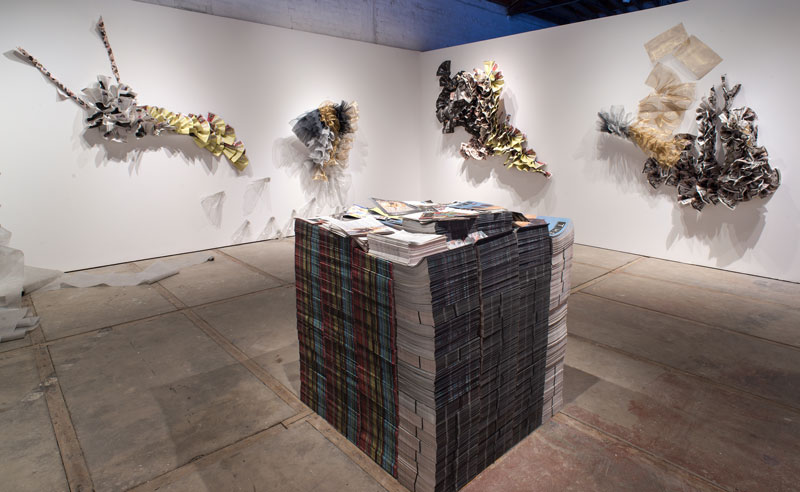
What are you working on right now, and what are you currently interested in?
I’m still processing the Antarctic experience. Years ago when I started to think about going to Antarctica, it was all for color. Once there, I found it stunning—the different colors in the water, the range in one tiny little frame: satisfying—gorgeous—amazing.
When we hit some rough water, the waves were Hokusai. He is an extraordinary artist, a sensualist, his erotic work is stunning and amusing and sly, and that’s how the water feels.
Ushuaia has the Museum at the End of the Earth—hmmm, My show opens in 2027. LOL.
I am interested in identifying the threads that connect my work. I believe that we each have a song, a personality or character that we express through tempo, instrument, volume, genre. All of these approaches will express whatever that song is. I express my song in many different ways. That’s why I do so many series in various media. They evolve, they move. There is consistency between them.
I have resolved many series to a mature end. Yes there seem to be many other things I could have done. I am more interested in questions of: what did I not do, and why did I not do it? What is next?
What are you trying to communicate with your art?
For me, the work is a meditative event, often something I understand about living in this time. I find humor and stasis. My planet is incredible and devastating in its disorienting beauty. I access those things for myself. It is delicious for me if I can access them for others. It is an explicatory event at this point in my life; this is what I do.
What is your dream project? If there were no restrictions on time or money what would you create?
Really, no restrictions? That’s a very interesting question in a lot of ways. I feel I am a time-traveler. I started in buses and cars and planes , and here I am flying around the planet with the internet.
I would like to go to a time when a person would be so comfortable within Self, not relying upon any external feedback. That would be a fine way to spend life, instead of trying to get a job or a partner, or to have children or not have children, or make money or not, or travel or not, or to choose the right thing at the right moment. Gone is the pressure that takes joy .
It would be nice to visit Ur and see what people were talking about in their life-giver, female-based religion. Being a strung-out seer or oracle at Delphi (they used snake venom?) would be interesting. Could I have gotten a job in Giovanni Battista Tiepolo’s atelier with this time’s mind, not that time’s mind. We live in our time. We are trained in our time. Our point of view is encapsulated in our time.
So, what would I do during THIS time, my time, with no financial, intellectual or gender restrictions? I don’t know. Absolutely not go into space. Travel on the planet more. I like my planet. I did like flying over it, I don’t want to pay that much attention anymore. I prefer to watch the clouds, and not worry about them biting me—there’s lightning in those things!
One thing I would make if I had infinite resources would be parks. I did a 30-foot diameter spiral land piece, using iris to describe the spiral gesture. In the winter, the points of the leaves poking through snow scribe the spiral; in the summer, the flowers and their perfumes scribe the spiral. Using the way things grow over time, making wet and dry environments that lead you on is of great interest for me. It’s very expensive to do. I don’t know if I can free up enough financially to spend money that readily—it is instilled in me not to waste.
I look at Olafur Eliasson’s work and the waterfalls are so wonderful in every meaning of the word. He had the freedom to do it—he just went for it. I think that’s brilliant. I think that’s empowerment.
I’ve always wanted to do a large-scale cat’s cradle: the participant goes in and takes a string and moves it across the space, effecting a change. Though this is a game usually played in your hands with another person, making it life-sized could say a lot of things about how people inter
Which creative medium would you love to pursue but haven’t yet?
I have no idea. They come to me because the piece that I want to do is demanding a specific medium. I am unlike a lot of people who put their medium in shapes for their pieces. For me the demands of the piece are specific.
I have not ever gotten a Bobcat sub-compact tractor. I always wanted one. I’m serious. I’m such a good driver.
Is there an artwork of yours that you will always keep?
I have a number of childhood drawings I will never get rid of, because they’re from a time when there was no barrier between what I was doing and what I understood. No one was looking. No one was grading. When I look at them, I am surprised at the visual insight.
What excites and / or delights you in the studio right now?
As usual, it’s the immediate future. I’m delighted to think about that. I love my work, and when it’s done, it’s like a child that has gone through school, and now they’re on their own.
The things that are happening all around me. Recently crows came to have piñon nuts. This was an unusual piñon year. I heard a ruckus and looked out – and there were huge black birds, wheeling, eating, pushing each other around, having arguments—about fifty crows, a murder of crows. This was the first time I ever got to understand and see and use that term. They were interesting and talkative and thuggish and completely wonderful. It’s hilarious.
Where are you making art while the Stay at Home Directive is in effect? How has it challenged or grown your practice?
I get to the studio every day. When I’m at my apartment, I’m watching cooking shows, which is very dangerous. It’s very sculptural. It’s pretty ephemeral stuff. There’s freedom in making something so finite.
What has it looked and or felt like to adjust your Harwood exhibition plans — which you proposed in early 2019 and have been working towards since?
I did have a different plan for this month, but now that that show will be next year it feels more relaxing. It is in the future. On another level it is still time to get it done. Moving the show has done that dangerous thing of giving me more time, to experiment more …and like so many things, where you have more time, you end up late. I have a feeling that going to the Antarctic has given me permission to do anything I want to do with this moment, this spark, with right now. For me, the future is really exciting the work has a future beyond me.
How can people learn more, support, and or purchase your work?
You can find me online, at www.madelincoit.com, and get in touch directly.
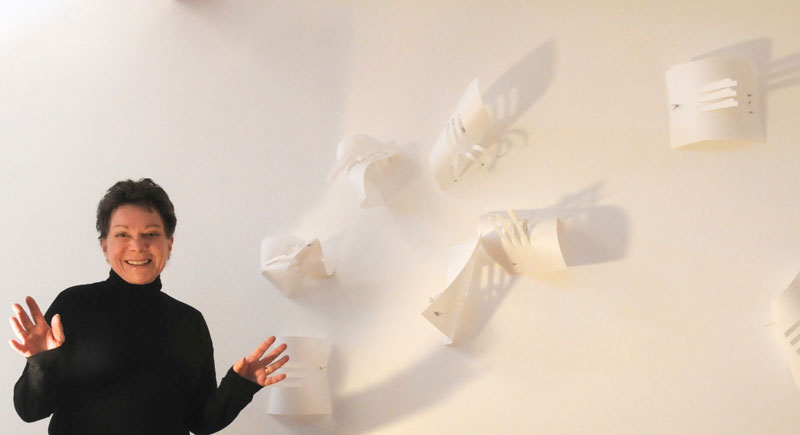
About Madelin Coit
Madelin Coit is an American multi-media artist whose career began in the 1970s. In her work, Coit has produced numerous series across media, including sprayed-oil paintings, drawings, prints, sculpture, installation, video projection, writing, performance, steel, neon, and shadow. She holds a BFA from the University of Connecticut, and has exhibited at Institute of Contemporary Art in Boston, the Hammer Museum, the Center for Contemporary Arts, and the New Mexico Museum of Art. Madelin’s work is in the collections of the State of New Mexico, the Port Authority of New York and New Jersey, the Skirball Cultural Center in Los Angeles, and the Museum of Fine Arts in Santa Fe.
